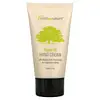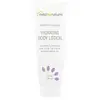What's inside
What's inside
 Key Ingredients
Key Ingredients

 Benefits
Benefits

 Concerns
Concerns

 Ingredients Side-by-side
Ingredients Side-by-side

Water
Skin ConditioningCarthamus Tinctorius Seed Oil
MaskingCetearyl Alcohol
EmollientGlycerin
HumectantIsopropyl Palmitate
EmollientGlyceryl Stearate
EmollientPEG-100 Stearate
Cetyl Esters
EmollientGluconolactone
Skin ConditioningButyrospermum Parkii Butter
Skin ConditioningArgania Spinosa Kernel Oil
EmollientSodium Benzoate
MaskingCetyl Palmitate
EmollientHydroxypropyl Starch Phosphate
Sclerocarya Birrea Seed Oil
HumectantXanthan Gum
EmulsifyingSodium Hydroxide
BufferingCaprylic/Capric Triglyceride
MaskingAloe Barbadensis Leaf Juice
Skin ConditioningTocopherol
AntioxidantCocos Nucifera Fruit Extract
EmollientCocos Nucifera Oil
MaskingOlea Europaea Fruit Oil
MaskingPersea Gratissima Oil
Skin ConditioningSesamum Indicum Seed Oil
EmollientSimmondsia Chinensis Seed Oil
EmollientRubus Idaeus Fruit Extract
AstringentBetaine
HumectantCucumis Melo Cantalupensis Fruit Extract
AstringentVanilla Planifolia Fruit Extract
Skin ConditioningSodium PCA
HumectantEuterpe Oleracea Fruit Extract
Hippophae Rhamnoides Fruit Extract
Skin ConditioningLycium Chinense Fruit Extract
AntioxidantPunica Granatum Extract
AstringentSodium Lactate
BufferingPCA
HumectantAlanine
MaskingSerine
MaskingGlycine
BufferingGlutamic Acid
HumectantLysine Hcl
Skin ConditioningThreonine
Arginine
MaskingProline
Skin ConditioningWater, Carthamus Tinctorius Seed Oil, Cetearyl Alcohol, Glycerin, Isopropyl Palmitate, Glyceryl Stearate, PEG-100 Stearate, Cetyl Esters, Gluconolactone, Butyrospermum Parkii Butter, Argania Spinosa Kernel Oil, Sodium Benzoate, Cetyl Palmitate, Hydroxypropyl Starch Phosphate, Sclerocarya Birrea Seed Oil, Xanthan Gum, Sodium Hydroxide, Caprylic/Capric Triglyceride, Aloe Barbadensis Leaf Juice, Tocopherol, Cocos Nucifera Fruit Extract, Cocos Nucifera Oil, Olea Europaea Fruit Oil, Persea Gratissima Oil, Sesamum Indicum Seed Oil, Simmondsia Chinensis Seed Oil, Rubus Idaeus Fruit Extract, Betaine, Cucumis Melo Cantalupensis Fruit Extract, Vanilla Planifolia Fruit Extract, Sodium PCA, Euterpe Oleracea Fruit Extract, Hippophae Rhamnoides Fruit Extract, Lycium Chinense Fruit Extract, Punica Granatum Extract, Sodium Lactate, PCA, Alanine, Serine, Glycine, Glutamic Acid, Lysine Hcl, Threonine, Arginine, Proline
Water
Skin ConditioningHelianthus Annuus Seed Oil
EmollientCetyl Alcohol
EmollientStearic Acid
CleansingCarthamus Tinctorius Seed Oil
MaskingGlyceryl Stearate
EmollientGlycerin
HumectantPrunus Amygdalus Dulcis Oil
Skin ConditioningButyrospermum Parkii Butter
Skin ConditioningLavandula Angustifolia Oil
MaskingLavandula Hybrida Oil
EmollientCymbopogon Schoenanthus Oil
MaskingTocopheryl Acetate
AntioxidantCocos Nucifera Oil
MaskingAloe Barbadensis Leaf Juice
Skin ConditioningCalendula Officinalis Flower Extract
MaskingChamomilla Recutita Flower Extract
MaskingEchinacea Angustifolia Extract
MoisturisingCamellia Sinensis Leaf Extract
AntimicrobialLavandula Angustifolia Flower/Leaf/Stem Extract
MaskingCitrus Grandis Fruit Extract
AstringentLaminaria Digitata Extract
Skin ProtectingRosmarinus Officinalis Leaf Extract
AntimicrobialPassiflora Incarnata Flower Extract
Skin ConditioningRosa Canina Fruit Extract
AstringentDimethicone
EmollientPhenoxyethanol
PreservativeAminomethyl Propanol
BufferingLecithin
EmollientSodium Acrylates Copolymer
Ethylhexylglycerin
Skin ConditioningLinalool
PerfumingCoumarin
PerfumingSodium Citrate
BufferingTetrasodium EDTA
Parfum
MaskingWater, Helianthus Annuus Seed Oil, Cetyl Alcohol, Stearic Acid, Carthamus Tinctorius Seed Oil, Glyceryl Stearate, Glycerin, Prunus Amygdalus Dulcis Oil, Butyrospermum Parkii Butter, Lavandula Angustifolia Oil, Lavandula Hybrida Oil, Cymbopogon Schoenanthus Oil, Tocopheryl Acetate, Cocos Nucifera Oil, Aloe Barbadensis Leaf Juice, Calendula Officinalis Flower Extract, Chamomilla Recutita Flower Extract, Echinacea Angustifolia Extract, Camellia Sinensis Leaf Extract, Lavandula Angustifolia Flower/Leaf/Stem Extract, Citrus Grandis Fruit Extract, Laminaria Digitata Extract, Rosmarinus Officinalis Leaf Extract, Passiflora Incarnata Flower Extract, Rosa Canina Fruit Extract, Dimethicone, Phenoxyethanol, Aminomethyl Propanol, Lecithin, Sodium Acrylates Copolymer, Ethylhexylglycerin, Linalool, Coumarin, Sodium Citrate, Tetrasodium EDTA, Parfum
Ingredients Explained
These ingredients are found in both products.
Ingredients higher up in an ingredient list are typically present in a larger amount.
Aloe Barbadensis Leaf Juice comes from leaves of the aloe plant. Aloe Barbadensis Leaf Juice is best known for helping to soothe sunburns. It is also anti-inflammatory, moisturizing, antiseptic, and can help heal wounds.
Aloe is packed with good stuff including Vitamins A, C, and E. These vitamins are antioxidants, which help fight free-radicals and the damage they may cause. Free-radicals are molecules that may damage your skin cells, such as pollution.
Aloe Barbadensis Leaf Juice also contains sugars. These sugars come in the form of monosaccharides and polysaccharides, folic acid, and choline. These sugars are able to help bind moisture to skin.
It also contains minerals such as calcium, 12 anthraquinones, fatty acids, amino acids, and Vitamin B12.
Learn more about Aloe Barbadensis Leaf JuiceThis ingredient is also known as shea butter. It is an effective skin hydrator and emollient.
Emollients help soothe and soften your skin. It does this by creating a protective film on your skin. This barrier helps trap moisture and keeps your skin hydrated. Emollients may be effective at treating dry or itchy skin.
Shea butter is rich in antioxidants. Antioxidants help fight free-radicals, or molecules that may harm the body. It is also full of fatty acids including stearic acid and linoleic acid. These acids help replenish the skin and keep skin moisturized.
While Shea Butter has an SPF rating of about 3-4, it is not a sunscreen replacement.
Shea butter may not be fungal acne safe. We recommend speaking with a professional if you have any concerns.
Learn more about Butyrospermum Parkii ButterCarthamus tinctorius seed oil comes from safflower, one of humanity's oldest crops.
Safflower seed oil contains a high percentage of linoleic acid and oleic acid. It also contains Vitamin E. These three components are effective moisturizers.
Vitamin E helps nourish your skin's lipid barrier. It is also a potent antioxidant. Antioxidants help fight free-radical molecules, or unstable molecules that may damage your skin cells.
Due to its high fatty acid content, this ingredient may not be malassezia folliculitis safe.
Thoughout history, safflower has been used for dying fabrics and in food as a saffron substitute.
Learn more about Carthamus Tinctorius Seed OilCocos Nucifera Oil is obtained from the kernels of the coconut fruit. In other words, this is coconut oil.
Coconut Oil is rich in fatty acids with lauric acid making up the majority of these. It also contains linoleic acid. Due to this high fatty acid content, coconut oil helps trap moisture and soften skin.
Despite being antibacterial, coconut oil may not be great for acne-prone skin. It is comedogenic and may clog pores. This ingredient may not be safe for malassezia or fungal acne.
Note: Coconut Oil should not replace your sunscreen for UV protection. Studies show it only blocks about 20% of UV.
This oil is non-volatile and has a light scent.
The term 'fragrance' is not regulated in many countries. In many cases, it is up to the brand to define this term. For instance, many brands choose to label themselves as "fragrance-free" because they are not using synthetic fragrances. However, their products may still contain ingredients such as essential oils that are considered a fragrance.
Learn more about Cocos Nucifera OilGlycerin is already naturally found in your skin. It helps moisturize and protect your skin.
A study from 2016 found glycerin to be more effective as a humectant than AHAs and hyaluronic acid.
As a humectant, it helps the skin stay hydrated by pulling moisture to your skin. The low molecular weight of glycerin allows it to pull moisture into the deeper layers of your skin.
Hydrated skin improves your skin barrier; Your skin barrier helps protect against irritants and bacteria.
Glycerin has also been found to have antimicrobial and antiviral properties. Due to these properties, glycerin is often used in wound and burn treatments.
In cosmetics, glycerin is usually derived from plants such as soybean or palm. However, it can also be sourced from animals, such as tallow or animal fat.
This ingredient is organic, colorless, odorless, and non-toxic.
Glycerin is the name for this ingredient in American English. British English uses Glycerol/Glycerine.
Learn more about GlycerinGlyceryl Stearate is a mix of glycerin and stearic acid.
It is used to stabilize the mixing of water and oil ingredients. By preventing these ingredients from separating, it can help elongate shelf life. It can also help thicken the product's texture.
As an emollient, it helps soften skin and supports barrier-replenishing ingredients.
In cosmetics, Glyceryl Stearate is often made from vegetable oils or synthetically produced.
This ingredient may not be fungal-acne safe
Fun fact: The human body also creates Glyceryl Stearate naturally.
Learn more about Glyceryl StearateWater. It's the most common cosmetic ingredient of all. You'll usually see it at the top of ingredient lists, meaning that it makes up the largest part of the product.
So why is it so popular? Water most often acts as a solvent - this means that it helps dissolve other ingredients into the formulation.
You'll also recognize water as that liquid we all need to stay alive. If you see this, drink a glass of water. Stay hydrated!
Learn more about Water